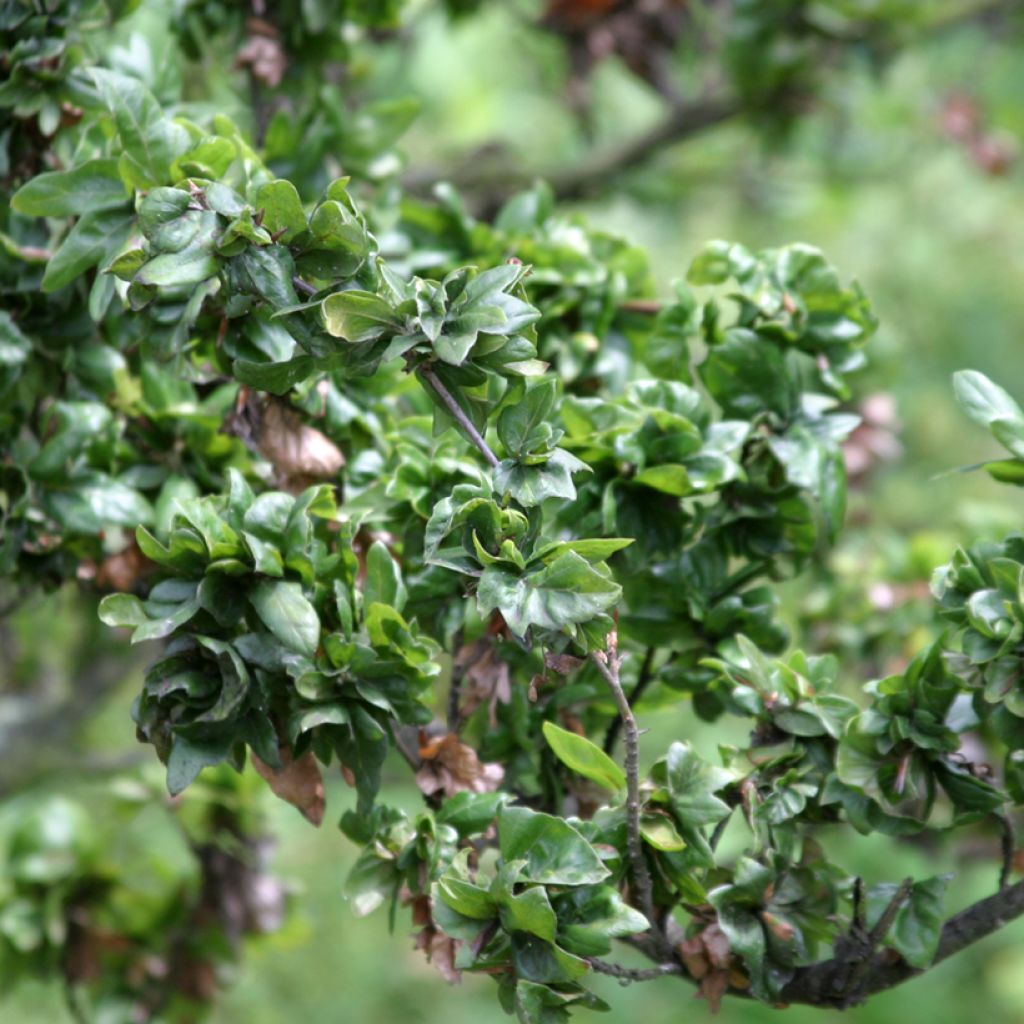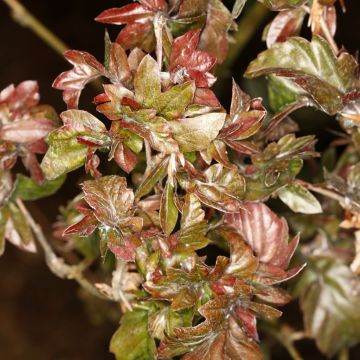

Fagus sylvatica Cristata


Fagus sylvatica Cristata
Fagus sylvatica Cristata
Fagus sylvatica Cristata
European Beech, Common Beech, cock's comb beech
Special offer!
Receive a €20 voucher for any order over €90 (excluding delivery costs, credit notes, and plastic-free options)!
1- Add your favorite plants to your cart.
2- Once you have reached €90, confirm your order (you can even choose the delivery date!).
3- As soon as your order is shipped, you will receive an email containing your voucher code, valid for 3 months (90 days).
Your voucher is unique and can only be used once, for any order with a minimum value of €20, excluding delivery costs.
Can be combined with other current offers, non-divisible and non-refundable.
Home or relay delivery (depending on size and destination)
Schedule delivery date,
and select date in basket
This plant carries a 24 months recovery warranty
More information
We guarantee the quality of our plants for a full growing cycle, and will replace at our expense any plant that fails to recover under normal climatic and planting conditions.
Would this plant suit my garden?
Set up your Plantfit profile →
Description
Fagus sylvatica 'Cristata' is a relatively small selection of Common Beech, with slow growth and foliage grouped in clusters on the branches. The green leaves are curly and irregularly cut in the shape of a crest. This tree has a wide fan-shaped crown and its inflorescences are insignificant. This hardy Beech grows in full sun or partial shade, in a wide range of soils. It is planted in a large shrub bed or as a solitary specimen.
The Beech, in Latin Fagus sylvatica, is an imposing tree with a spreading habit. Its cylindrical trunk is covered with smooth, light gray bark. This tree can live for several centuries. It is native to central Europe to the Caucasus and one of the most common species in European forests, reaching a height of 20m at maturity. Its reddish wood is used in cabinetmaking and for the production of wooden tools and toys, as well as firewood. It is a member of the Fagaceae family, which also includes the Oak, Chestnut, and a few other lesser-known genera.
The 'Cristata' Beech is characterised by slow growth and modest development, reaching a height of 8 to 10m and a width of 6 to 7m at maturity. Its crown widens at the top over time to form a spreading crown. It is a unique variety of Beech with small, deeply toothed or lobed leaves that are delightfully incurved. It is interesting to note that the leaves do not grow uniformly on the branches but in groups of several. Between the clusters of leaves, long bare stems without leaves are clearly visible. This gives the plant an exotic appearance, resembling a bonsai. This small tree is hardy down to -25°C, appreciates humus-bearing soils and does not tolerate drought.
Fagus sylvatica 'Cristata' is a charming small tree with an architectural silhouette and attractive foliage that can be planted in medium to large gardens. It requires no maintenance where it thrives and prefers cool and temperate, or mountain, climates. It will suffer in gardens with excessively hot and dry summers. It thrives particularly well in cool, but not too wet, well-drained soils, even limestone and preferably rich in humus. Planted as a solitary specimen, it becomes a focal point of interest. However, it can also be trained as a topiary to reduce its size or cultivated as a bonsai.
Report an error about the product description
Fagus sylvatica Cristata in pictures


Plant habit
Foliage
Botanical data
Fagus
sylvatica
Cristata
Fagaceae
European Beech, Common Beech, cock's comb beech
Cultivar or hybrid
Other Fagus - Beech
View all →Planting and care
Fagus sylvatica 'Cristata' grows in full sun or partial shade and thrives in cool and temperate climates. The soil must be well-drained and always have a constant level of moisture, as it does not tolerate drought at all. Dig a hole with sides and depth of 50 or 60 cm, and add planting compost to the existing soil. Soak the root ball in a bucket of water for fifteen minutes before planting, place it in the ground, backfill around it, and water generously. Water regularly during the first two years, then monitor watering especially during hot periods. In February and March, when the tree is dormant, remove any branches that compromise symmetry or are tangled to maintain a good habit. Monitor the foliage for any signs of scale insects.
Planting period
Intended location
Care
This item has not been reviewed yet - be the first to leave a review about it.
Similar products
Haven't found what you were looking for?
Hardiness is the lowest winter temperature a plant can endure without suffering serious damage or even dying. However, hardiness is affected by location (a sheltered area, such as a patio), protection (winter cover) and soil type (hardiness is improved by well-drained soil).

Photo Sharing Terms & Conditions
In order to encourage gardeners to interact and share their experiences, Promesse de fleurs offers various media enabling content to be uploaded onto its Site - in particular via the ‘Photo sharing’ module.
The User agrees to refrain from:
- Posting any content that is illegal, prejudicial, insulting, racist, inciteful to hatred, revisionist, contrary to public decency, that infringes on privacy or on the privacy rights of third parties, in particular the publicity rights of persons and goods, intellectual property rights, or the right to privacy.
- Submitting content on behalf of a third party;
- Impersonate the identity of a third party and/or publish any personal information about a third party;
In general, the User undertakes to refrain from any unethical behaviour.
All Content (in particular text, comments, files, images, photos, videos, creative works, etc.), which may be subject to property or intellectual property rights, image or other private rights, shall remain the property of the User, subject to the limited rights granted by the terms of the licence granted by Promesse de fleurs as stated below. Users are at liberty to publish or not to publish such Content on the Site, notably via the ‘Photo Sharing’ facility, and accept that this Content shall be made public and freely accessible, notably on the Internet.
Users further acknowledge, undertake to have ,and guarantee that they hold all necessary rights and permissions to publish such material on the Site, in particular with regard to the legislation in force pertaining to any privacy, property, intellectual property, image, or contractual rights, or rights of any other nature. By publishing such Content on the Site, Users acknowledge accepting full liability as publishers of the Content within the meaning of the law, and grant Promesse de fleurs, free of charge, an inclusive, worldwide licence for the said Content for the entire duration of its publication, including all reproduction, representation, up/downloading, displaying, performing, transmission, and storage rights.
Users also grant permission for their name to be linked to the Content and accept that this link may not always be made available.
By engaging in posting material, Users consent to their Content becoming automatically accessible on the Internet, in particular on other sites and/or blogs and/or web pages of the Promesse de fleurs site, including in particular social pages and the Promesse de fleurs catalogue.
Users may secure the removal of entrusted content free of charge by issuing a simple request via our contact form.
The flowering period indicated on our website applies to countries and regions located in USDA zone 8 (France, the United Kingdom, Ireland, the Netherlands, etc.)
It will vary according to where you live:
- In zones 9 to 10 (Italy, Spain, Greece, etc.), flowering will occur about 2 to 4 weeks earlier.
- In zones 6 to 7 (Germany, Poland, Slovenia, and lower mountainous regions), flowering will be delayed by 2 to 3 weeks.
- In zone 5 (Central Europe, Scandinavia), blooming will be delayed by 3 to 5 weeks.
In temperate climates, pruning of spring-flowering shrubs (forsythia, spireas, etc.) should be done just after flowering.
Pruning of summer-flowering shrubs (Indian Lilac, Perovskia, etc.) can be done in winter or spring.
In cold regions as well as with frost-sensitive plants, avoid pruning too early when severe frosts may still occur.
The planting period indicated on our website applies to countries and regions located in USDA zone 8 (France, United Kingdom, Ireland, Netherlands).
It will vary according to where you live:
- In Mediterranean zones (Marseille, Madrid, Milan, etc.), autumn and winter are the best planting periods.
- In continental zones (Strasbourg, Munich, Vienna, etc.), delay planting by 2 to 3 weeks in spring and bring it forward by 2 to 4 weeks in autumn.
- In mountainous regions (the Alps, Pyrenees, Carpathians, etc.), it is best to plant in late spring (May-June) or late summer (August-September).
The harvesting period indicated on our website applies to countries and regions in USDA zone 8 (France, England, Ireland, the Netherlands).
In colder areas (Scandinavia, Poland, Austria...) fruit and vegetable harvests are likely to be delayed by 3-4 weeks.
In warmer areas (Italy, Spain, Greece, etc.), harvesting will probably take place earlier, depending on weather conditions.
The sowing periods indicated on our website apply to countries and regions within USDA Zone 8 (France, UK, Ireland, Netherlands).
In colder areas (Scandinavia, Poland, Austria...), delay any outdoor sowing by 3-4 weeks, or sow under glass.
In warmer climes (Italy, Spain, Greece, etc.), bring outdoor sowing forward by a few weeks.


















































